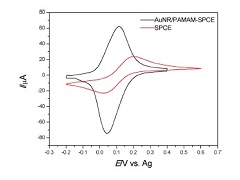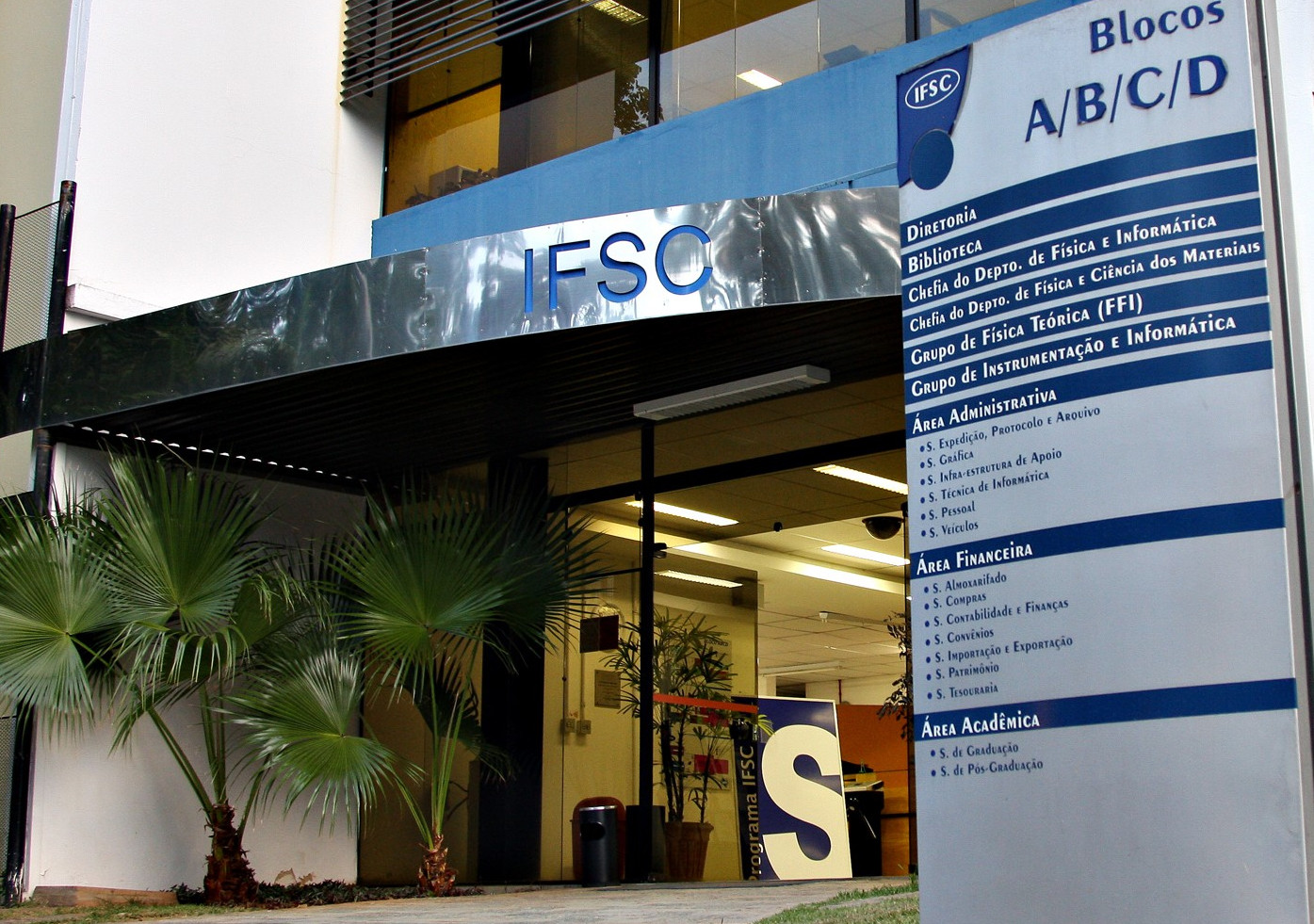Gold nanorods and poly(amido amine) dendrimer thin film for biosensing.
RIBOVSKI, Laís; SANTOS, Fabrício A.; ZUCOLOTTO, Valtencir; JANEGITZ, Bruno C.
RIBOVSKI, Laís; SANTOS, Fabrício A.; ZUCOLOTTO, Valtencir; JANEGITZ, Bruno C.
 Abstract: The use of gold nanomaterials in electrochemical biosensing has been proven to be effective either by modifying the electrodes' surface or by labeling molecules. The combination of dendrimers with gold nanomaterials is a worthwhile alternative to create a suitable environment to immobilize enzymes. In this paper, we report the development of a thin film composed of gold nanorods (AuNRs) and poly(amido amine) (PAMAM) dendrimer generation 4, which was applied for biosensing. The film was prepared by drop-casting the dispersion onto a screen-printed carbon electrode (SPCE), and tyrosinase (Tyr) enzyme was further immobilized onto the modified electrode. The direct electron transfer (DET) between the enzyme and electrode surface was verified through cyclic voltammetry (CV), yielding an apparent heterogeneous electron transfer rate constant of 0.045 s-1. Analytical curves were obtained by chronoamperometry for catechol (CAT) and dopamine (DA) with linear ranges from 2.8 to 30.3 µmol L-1 and 27.8 to 448.7 µmol L-1, respectively, and detection limits of 1.0 µmol L-1 for CAT and 10.0 µmol L-1 for DA. The improved electrochemical properties of AuNRs-PAMAM-modified SPCE combined with the effective enzyme immobilization led to a promising electrochemical device to detect phenolic compounds. Abstract: The use of gold nanomaterials in electrochemical biosensing has been proven to be effective either by modifying the electrodes' surface or by labeling molecules. The combination of dendrimers with gold nanomaterials is a worthwhile alternative to create a suitable environment to immobilize enzymes. In this paper, we report the development of a thin film composed of gold nanorods (AuNRs) and poly(amido amine) (PAMAM) dendrimer generation 4, which was applied for biosensing. The film was prepared by drop-casting the dispersion onto a screen-printed carbon electrode (SPCE), and tyrosinase (Tyr) enzyme was further immobilized onto the modified electrode. The direct electron transfer (DET) between the enzyme and electrode surface was verified through cyclic voltammetry (CV), yielding an apparent heterogeneous electron transfer rate constant of 0.045 s-1. Analytical curves were obtained by chronoamperometry for catechol (CAT) and dopamine (DA) with linear ranges from 2.8 to 30.3 µmol L-1 and 27.8 to 448.7 µmol L-1, respectively, and detection limits of 1.0 µmol L-1 for CAT and 10.0 µmol L-1 for DA. The improved electrochemical properties of AuNRs-PAMAM-modified SPCE combined with the effective enzyme immobilization led to a promising electrochemical device to detect phenolic compounds. | |
| Journal of Solid State Electrochemistry |
| v. 23, n. 5, p. 1581-1591 - Ano: 2019 |
| Fator de Impacto: 2,509 |
| http://dx.doi.org/10.1007/s10008-019-04247-z |  @article={002941973,author = {RIBOVSKI, Laís; SANTOS, Fabrício A.; ZUCOLOTTO, Valtencir; JANEGITZ, Bruno C.},title={Gold nanorods and poly(amido amine) dendrimer thin film for biosensing},journal={Journal of Solid State Electrochemistry},note={v. 23, n. 5, p. 1581-1591},year={2019}} @article={002941973,author = {RIBOVSKI, Laís; SANTOS, Fabrício A.; ZUCOLOTTO, Valtencir; JANEGITZ, Bruno C.},title={Gold nanorods and poly(amido amine) dendrimer thin film for biosensing},journal={Journal of Solid State Electrochemistry},note={v. 23, n. 5, p. 1581-1591},year={2019}} |





